Modeling of Electromagnetic Field
Data is displayed for academic year: 2023./2024.
Laboratory exercises
Course Description
Theory of electromagnetic fields. Quasi-static approximation in the field calculation. Maxwell equations. Propagation of electromagnetic waves. Gauge transforms and potentials. Forces and stresses. Analytical methods. Numerical methods: finite difference method, method of moments, finite element method.
Study Programmes
University graduate
[FER3-HR] Audio Technologies and Electroacoustics - profile
Elective Courses
(2. semester)
[FER3-HR] Communication and Space Technologies - profile
Elective Courses
(2. semester)
[FER3-HR] Computational Modelling in Engineering - profile
(2. semester)
[FER3-HR] Computer Engineering - profile
Elective Courses
(2. semester)
[FER3-HR] Computer Science - profile
Elective Courses
(2. semester)
[FER3-HR] Control Systems and Robotics - profile
Elective Courses
(2. semester)
[FER3-HR] Data Science - profile
Elective Courses
(2. semester)
[FER3-HR] Electrical Power Engineering - profile
Elective Courses
(2. semester)
[FER3-HR] Electric Machines, Drives and Automation - profile
Elective Courses
(2. semester)
[FER3-HR] Electronic and Computer Engineering - profile
Elective Courses
(2. semester)
[FER3-HR] Electronics - profile
Elective Courses
(2. semester)
[FER3-HR] Information and Communication Engineering - profile
Elective Courses
(2. semester)
[FER3-HR] Network Science - profile
Elective Courses
(2. semester)
[FER3-HR] Software Engineering and Information Systems - profile
Elective Courses
(2. semester)
Learning Outcomes
- Explain the quasi-static approximation in elekctromagnetic fields calculation
- Explain the principles of electromechanical energy conversion
- Explain the propagation of electromagnetic waves
- Describe the propagation of guided electromagnetic waves
- Explain Maxwell equations
- Explain energy and power flow
- Apply gauge transforms and calculate the potentials
- Calculate forces and stresses
Forms of Teaching
Lectures
Involvement in lectures
Independent assignmentspreparing for lab, homeworks
LaboratoryLaboratory work
Work with mentorconsultations
Grading Method
| Continuous Assessment | Exam | |||||
|---|---|---|---|---|---|---|
| Type | Threshold | Percent of Grade | Threshold | Percent of Grade | ||
| Laboratory Exercises | 0 % | 15 % | 0 % | 15 % | ||
| Quizzes | 0 % | 5 % | 0 % | 5 % | ||
| Mid Term Exam: Written | 0 % | 30 % | 0 % | |||
| Final Exam: Written | 0 % | 30 % | ||||
| Final Exam: Oral | 20 % | |||||
| Exam: Written | 0 % | 60 % | ||||
| Exam: Oral | 20 % | |||||
Week by Week Schedule
- Electromagnetic field, field sources, field vectors, Maxwell’s equations in differential and integral form
- Electromagnetic potentials, scalar electric and magnetic vector potential, antipotentials, gauge transforms
- Hertz potentials, integral representation of potentials, wave equations and integrals of potentials and fields
- Energy and forces in electromagnetic field, conservation of electromagnetic energy, Poynting’s theorem
- Electromagnetic momentum, volume forces and surface stresses, Maxwell stress tensor
- Classification of electromagnetic fields, equations of static electric field, static magnetic field, quasistatic electromagnetic field and dynamic electromagnetic field
- Analytical methods, separation of variables, rectangular coordinate system, Laplace’s equation, wave equation
- Midterm exam
- Separation of variables in cylindrical and spherical coordinate system, Laplace’s equation, wave equation
- Finite difference method, accuracy and stability of solution, application to transmission lines and waveguides
- Method of moments, integral equations, Green’s functions, method of images
- Application of method of moments to computation of static fields
- Finite element method, solution of two-dimensional Laplace’s and Poisson’s equation, deriving of equivalent integral form, discretization of domain, approximation of unknown function on element
- Assembling of equation system, solution of the system, post processing
- Final exam
Literature
Z. Haznadar, Ž. Štih (1997.), Elektromagnetizam I, Školska knjiga
Z. Haznadar, Ž. Štih (1997.), Elektromagnetizam II, Školska knjiga
S. Berberović (1998.), Teorijska elektrotehnika - odabrani primjeri, Graphis
For students
General
ID 223685
Summer semester
5 ECTS
L1 English Level
L1 e-Learning
45 Lectures
0 Seminar
0 Exercises
13 Laboratory exercises
0 Project laboratory
0 Physical education excercises
Grading System
86 Excellent
74 Very Good
62 Good
50 Sufficient


 Pristupačnost
Pristupačnost



